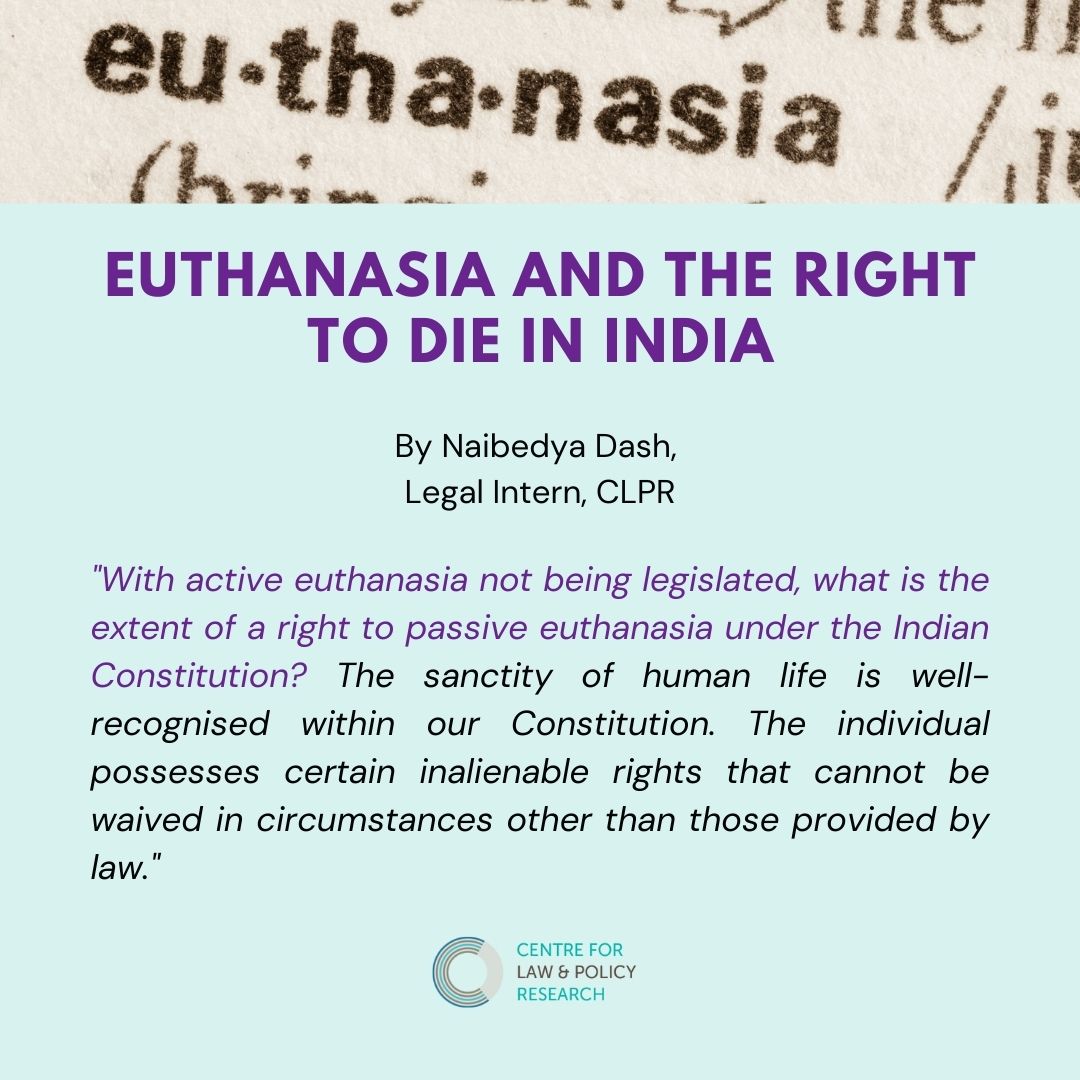Euthanasia and its regulation present challenging questions of balance. On one hand we have the patient’s continued suffering, and in the absence of hope for future recovery, the need to end the suffering. On the other, we have questions about whether a person has any right to end their own lives, and if granted, how the State may regulate the serious repercussions emanating from such a right. I look at the current framework regarding euthanasia in India, specifically discussing the ‘right to die’.

The prevailing legal position on euthanasia has been established by a series of three cases – Gian Kaur v. State of Punjab in 1996, Aruna Shanbaug v. Union of India in 2011 and finally Common Cause v. Union of India in 2018. An important distinction made across the cases is between active euthanasia and passive euthanasia. Active euthanasia is when specific positive actions are taken to end a patient’s life. Passive euthanasia is when life-support mechanisms that are preserving the patient’s life are withdrawn. The distinction was further enumerated by the Supreme Court (‘the Court’) in Common Cause. The Court held that in passive euthanasia, the patient’s death is caused by the underlying disease itself on withdrawal of life-support measures, and active euthanasia is when lethal substances such as injections are administered and thereby cause the death directly.
It has been held continuously, both by our courts and foreign courts that active euthanasia can only be legalised through legislation, i.e., acts representing popular will.
With active euthanasia not being legislated, what is the extent of a right to passive euthanasia under the Indian Constitution? The sanctity of human life is well-recognised within our Constitution. The individual possesses certain inalienable rights that cannot be waived in circumstances other than those provided by law. Aruna Shanbaug held that passive euthanasia can be applied for by persons in a permanent vegetative state, by approaching the High Court under Article 226 of the Constitution. This was done under the courts adopting a ‘parens patriae’ role.
Thereafter in Common Cause, the Supreme Court dealt with the question of whether the right to life under Article 21 of the Indian Constitution encompasses within its ambit a ‘right to die with dignity’. Answering in the affirmative, the Court emphasised the dynamic and constantly evolving nature of fundamental rights. Individual dignity having been reaffirmed as falling under Article 21 by the Puttuswamy I judgement, the Court interpreted the right to live with human dignity as necessarily meaning a right to live a dignified life until the point of death. In the Court’s eyes, this would include a dignified procedure of death. This allows a terminally ill person or a person in a permanent vegetative state to seek passive euthanasia to protect their right to a dignified death under Article 21. In order to give effect to this right, the Court in Common Cause issued guidelines regarding Advance Directives (‘AD’) which are documents that detail the choices of the patient regarding treatment decisions along with who would be competent to take decisions on their behalf in case of their inability to do so. While the guidelines were amended in February 2023 to facilitate easier implementation of ADs to larger sections of society, they still place an onerous burden on each applicant. Each AD is subject to the opinion of two medical boards, and the decisions of the boards can only be challenged via writ petition under Article 226. The current position puts the onus largely on the families of the patients, who are subjected to a rigorous bureaucratic process in order to give effect to the ADs, which are notarised documents signed and testified in front of a judicial magistrate.
While these judgements outline detailed procedures for passive euthanasia and advance directives, the reality on the ground is very different, as very few people are aware of these directives. End of life decisions are incredibly hard to take, and if we want to implement the right to live with dignity, then more needs to be done to translate these directives and judgements and make them accessible to all.

